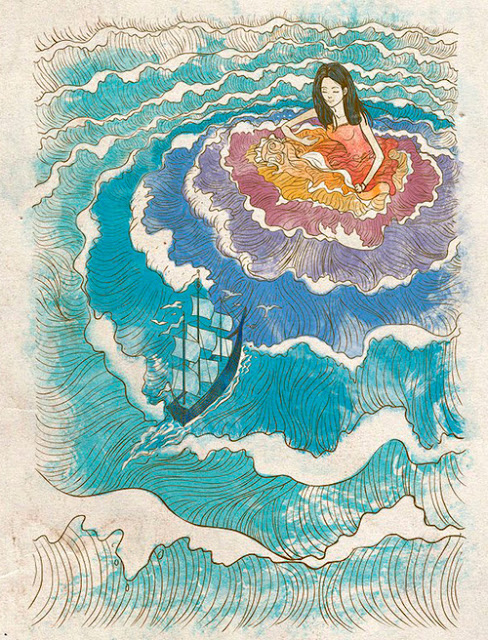A common tactic for understanding the complexity of death and end-of-life is to liken it to other parts of life that are a little simpler to comprehend. Though this is done commonly across cultures, the metaphors used differ from culture to culture. Here’s a smattering of ways various people visualize death around the world:
The Dowayo, a tribe of people in the west-central African country of Cameroon, liken death to circumcision, the rather harsh rite of passage from boy to man. They even remove the skulls of those who have died in a mime of the circumcision ceremony, the next rite of passage from life to death.
In various Christian religions, the seed or plant is a metaphor, not only for life, but for death. Just as the growth of a plant from seed is a metaphor for life, the withering of a plant or flower is connected with death. Cut flowers or wreathes are placed at burial sites, generally left to wither and whisp away in the wind, as does life.
The well-documented near-death experience of a far-away light and a long tunnel that we know in the West is, apparently, a cultural phenomenon, based on our own metaphors for the experience of death. Other cultures have quite different accounts of near death. The Japanese see “depressing ponds and gloomy rivers”, as explained in Nigel Barley’s Grave Matters. Barley explains this to be a result of the stark difference in what each culture believes about death. Western religions tend to see death as a release into a better world — hence, the light that pulls us from the darkness of life. Eastern cultures, however, have a much murkier distinction between life and death.
“Death does not just exist. In order to have coherence and to find its place, it has to be integrated into a wider scheme of things … [One way is] to imagine death as being like something else that is more readily accessible.” – Nigel Barley, Grave Matters
Buddhism, for example, harbors a belief in rebirth, seeing life and death as part of a cycle, rather than a linear journey from birth to death.
In Victorian-age fiction, death is often intertwined with sex, as the embrace of death is likened to that of a lover.
The funeral services of the Berawan, a people on the Indonesian island of Borneo, include a special song that follows the river migration of the Berawan people from their original homeland and represents a roadmap to Heaven. The metaphor of a river is seen across cultures — think of the mythological Greek River Styx into the Underworld — a metaphor for the journey from life to death to afterlife.
Traditional Cantonese funerals see this journey, as well, but represent it instead with fire. The funeral rites include writing the name of the person who has died on a piece of paper, placing it on a sedan chair made of paper, and setting the whole thing on fire.
For many more metaphors, and an in-depth anthropological look at death rituals around the world, see Grave Matters: A lively history of death around the world by Nigel Barley.
For more perspectives on death around the world, browse our Cultural Perspectives column.
Image from Journey Through Life.

 Metaphors on Death
Metaphors on Death



 “Help Me, Helen”
“Help Me, Helen”
 Recovering Cremation Remains After the Los Angeles Fires
Recovering Cremation Remains After the Los Angeles Fires
 “As Tears Go By” by Marianne Faithfull
“As Tears Go By” by Marianne Faithfull














